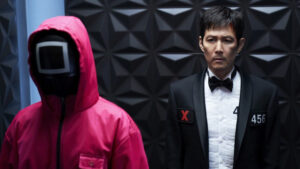
The Vera C. Rubin Observatory has unveiled its first light images, revealing an astonishing 10 million galaxies in a single frame. This groundbreaking achievement marks the beginning of a decade-long astronomical survey that promises to reshape our understanding of the universe. Located on Cerro Pachón in the Chilean Andes, the observatory’s debut images offer a breathtaking view of the cosmos, showcasing the observatory’s unprecedented capabilities.
Last week, the observatory released its inaugural images, capturing the attention of astronomers and the public alike. The images, which include a stunning shot of the Virgo Cluster, reveal the vastness of the universe in a way never seen before. The observatory’s powerful 3.2-gigapixel camera, the largest digital camera ever made, is central to this achievement, capturing a swath of the night sky equivalent to 45 full moons every 30 seconds.
The Observatory’s Ambitious Mission
Perched 8,660 feet above sea level, the Vera C. Rubin Observatory was constructed with the support of the US National Science Foundation and the Department of Energy. Named after Vera Rubin, the astronomer whose work on galaxy rotation provided evidence for dark matter, the observatory’s mission is as ambitious as its namesake’s legacy. Over the next decade, it will conduct the Legacy Survey of Space and Time, photographing the entire Southern Hemisphere sky every few nights.
The survey aims to address four grand scientific goals: to unmask dark matter and dark energy, inventory the Solar System’s asteroids and comets, chart the formation of the Milky Way, and capture transient cosmic events. The observatory’s unique design, featuring a 27-foot-wide dual mirror and the massive LSST Camera, enables it to achieve these objectives with unparalleled precision.
Revolutionizing Planetary Defense
Beyond its stunning imagery, the Vera C. Rubin Observatory is set to revolutionize planetary defense. In just 10 hours of engineering data, its detection software identified 2,104 new asteroids, including seven near-Earth objects (NEOs). This early success underscores the observatory’s potential to significantly enhance our ability to detect and track asteroids that could pose a threat to Earth.
“It took 225 years of astronomical observations to detect the first 1.5 million asteroids,” said Jake Kurlander, a graduate student astronomer at the University of Washington. “Rubin will double that number in less than a year.”
As the observatory begins its nightly scans, it is projected to catalog over 5 million asteroids and approximately 100,000 NEOs over the next decade. This will help NASA meet its congressionally mandated goal of identifying 90 percent of the estimated 25,000 city-killer-class NEOs.
A Global Resource for Cosmic Exploration
The Vera C. Rubin Observatory’s impact extends beyond scientific research. Its images will be shared with the world, allowing anyone to explore the universe through the Skyviewer app. This open-access approach democratizes space exploration, inviting people everywhere to engage with the wonders of the cosmos.
The observatory’s debut image, dubbed the “Cosmic Treasure Chest,” is a testament to this vision. Composed of 1,185 exposures, it offers a glimpse into the Virgo Cluster, located 55 million light-years away. The image is not just a visual marvel but a scientific tool that will aid in the search for answers to some of the universe’s most profound questions.
Perspective in a Vast Universe
At a time when global challenges can feel overwhelming, the Vera C. Rubin Observatory provides a unique perspective. Its images remind us of our place in the universe, offering a sense of wonder and humility. As Walt Whitman once wrote:
“I wander’d off by myself, In the mystical moist night-air, and from time to time, Look’d up in perfect silence at the stars.”
The observatory’s first light images serve as a powerful reminder that we are just one small part of a vast, interconnected cosmos. As the observatory continues its mission, it will undoubtedly inspire new generations of scientists and stargazers to look up and explore the mysteries of the universe.






